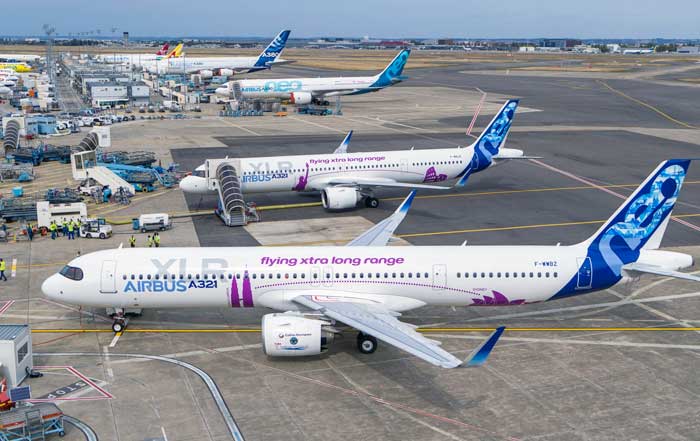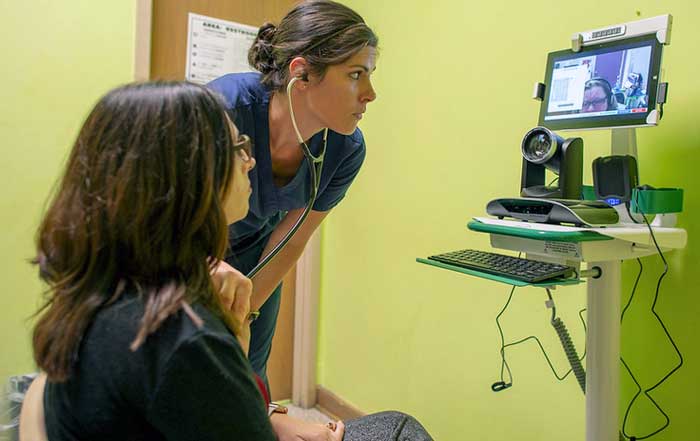The notion of first-class accommodation has evolved far beyond the traditional definition of luxury. It now encompasses a fusion of sustainability, technology, and cultural immersion. Travelers no longer seek mere opulence; they demand meaning, authenticity, and personalization. Across the world, first-class hotels, resorts, and exclusive retreats are redefining what it means to experience true comfort — combining elegant design, advanced digital services, and ethical hospitality practices. This transformation has not only reshaped how guests view luxury but also how destinations perceive their own role in the global tourism economy.
As worldsdoor.com explores the modern travel landscape, it becomes clear that premium accommodation is about more than five-star ratings. It represents an ecosystem of human creativity and innovation designed to meet the growing expectations of global travelers who value well-being, privacy, and cultural engagement. From the coastal sanctuaries of the Maldives to the urban sophistication of New York and the eco-conscious lodges of Sweden, first-class hospitality reflects an evolving harmony between indulgence and responsibility.
Learn more about how sustainable travel is transforming expectations at worldsdoor.com/travel.html.
Redefining Luxury in the Age of Global Travel
From Extravagance to Experience
A generation ago, luxury accommodations were measured by marble lobbies, gold-plated fixtures, and exclusivity. Today, that definition feels outdated. Modern travelers — especially from Europe, North America, and Asia — are increasingly motivated by experiences rather than possessions. According to the World Travel & Tourism Council, the most successful luxury properties are those that offer emotional connection and local authenticity alongside comfort and service excellence.
Brands such as Aman Resorts, Four Seasons, and Six Senses have led the charge in reimagining hospitality as a personalized journey. Guests are invited to interact with local artisans, engage in wellness rituals, and explore communities in ways that enrich both visitor and host. The Aman Tokyo, for instance, blends minimalist Japanese design with meditative architecture to evoke a serene experience within the heart of one of the world’s busiest cities. Similarly, Six Senses Zighy Bay in Oman allows guests to paraglide into the property from a mountaintop, merging adrenaline with elegance.
This shift reflects a deeper change in mindset — travelers now associate luxury with mindfulness and meaning. Discover how culture and lifestyle intersect in modern tourism at worldsdoor.com/lifestyle.html.
The Digital Dimension of Luxury
Technology as the New Butler
Technology has quietly become the backbone of elite travel. From biometric check-ins to AI-powered concierges, first-class accommodations are leveraging digital solutions to enhance privacy and efficiency. Marriott International and Hilton Worldwide have introduced mobile key systems and predictive guest service models that analyze preferences in real time, ensuring every detail — from pillow type to minibar selection — aligns with individual expectations.
In the world’s leading luxury hotels, automation works hand-in-hand with human touch. The Peninsula Hotels brand, for instance, integrates proprietary in-room tablets that control lighting, temperature, and entertainment while offering direct chat access to hotel staff. Meanwhile, Rosewood Hotels & Resorts has invested in AI-driven personalization engines that adapt service delivery based on prior guest behavior.
At the same time, privacy remains paramount. Data-driven comfort must be balanced with discretion — a principle upheld by forward-thinking hotels such as Mandarin Oriental, where guests can request a “digital detox” stay that minimizes technological distractions and promotes mindfulness.
The intersection of technology and ethics in hospitality is shaping how travelers define comfort in 2025. Learn more at worldsdoor.com/technology.html.
🌍 Global Luxury Hospitality Explorer
Iconic Destinations and Signature Experiences
North America: Innovation Meets Comfort
In the United States, iconic properties such as The Plaza New York, Four Seasons Maui at Wailea, and The Ritz-Carlton Half Moon Bay continue to symbolize grandeur, yet they are also embracing sustainability and digital transformation. The rise of boutique concepts like 1 Hotels demonstrates the growing influence of eco-conscious design, where reclaimed wood, plant-based interiors, and local sourcing redefine modern elegance.
Canada’s luxury landscape tells a different story — one shaped by nature and tranquility. The Fogo Island Inn in Newfoundland exemplifies architectural beauty intertwined with community-driven sustainability. Built by local artisans and powered by renewable energy, it invites travelers to experience comfort within a socially responsible context.
Explore more stories on sustainable tourism at worldsdoor.com/environment.html.
Europe: Heritage Reimagined
Europe’s first-class accommodations often balance history and innovation. In Paris, Le Meurice and Hôtel de Crillon preserve French heritage while introducing modern wellness amenities and AI-enhanced room management systems. In Switzerland, Badrutt’s Palace Hotel continues to attract royalty and global elites, yet it now offers renewable energy initiatives and partnerships with local farms to reduce its environmental footprint.
Italy’s Belmond Hotel Caruso and Spain’s Hotel Arts Barcelona are benchmarks for how European hospitality combines cultural storytelling with contemporary artistry. Meanwhile, the Nordic region has emerged as a hub of sustainable luxury — properties like Treehotel in Sweden and Arctic Bath in Lapland exemplify how design innovation can coexist with ecological sensitivity.
Learn how cultural heritage influences luxury experiences at worldsdoor.com/culture.html.
Asia-Pacific: The New Frontier of Luxury Hospitality
Asia’s hotel industry has become a playground for innovation and design experimentation. Japan leads with understated sophistication — properties such as Hoshinoya Tokyo merge ancient ryokan traditions with cutting-edge comfort. In Singapore, the Marina Bay Sands and Raffles Hotel stand as architectural marvels where East meets West, offering curated experiences that range from sky-high dining to cultural immersion tours.
Thailand, Malaysia, and Indonesia are redefining tropical luxury through eco-resorts that combine regenerative tourism with deep cultural awareness. The Datai Langkawi and Four Seasons Bali at Sayan illustrate how spiritual wellness, local craftsmanship, and biodiversity conservation can form the core of first-class travel.
For insights into regional travel trends, visit worldsdoor.com/world.html.
Middle East and Africa: A Fusion of Tradition, Modernity, and Innovation
The Rise of Desert Luxury
In the Middle East, first-class accommodations symbolize a spectacular fusion of ancient tradition and futuristic ambition. The region has redefined luxury hospitality through architectural innovation and cultural storytelling. The Burj Al Arab Jumeirah in Dubai remains a global icon, often regarded as the world’s first seven-star hotel, while new contenders such as Atlantis The Royal and One&Only One Za’abeel have transformed the skyline into a playground for experiential luxury. These properties combine immersive entertainment with state-of-the-art sustainability features, including solar energy integration and advanced water recycling systems.
In Saudi Arabia, the government-backed NEOM and Red Sea Project developments are reshaping the concept of luxury travel. These futuristic destinations aim to be powered entirely by renewable energy and designed to preserve coral ecosystems and desert habitats. The emphasis is on harmony between opulence and ecology, aligning with the nation’s Vision 2030 diversification plan.
Qatar and Oman have also emerged as refined alternatives for travelers seeking authenticity alongside comfort. The Mandarin Oriental Doha integrates Qatari artistry within its interiors, while Alila Jabal Akhdar in Oman offers panoramic mountain serenity complemented by eco-conscious architecture. Learn more about how regional innovation drives luxury development at worldsdoor.com/innovation.html.
African Excellence in Sustainable Hospitality
Africa’s first-class accommodation scene has grown from niche safari lodges into a sophisticated network of eco-luxury destinations. Singita, andBeyond, and Wilderness Safaris have pioneered environmentally responsible tourism by establishing lodges that actively contribute to conservation and local employment. In South Africa’s Kruger National Park, for instance, Singita Lebombo Lodge integrates solar energy systems and supports anti-poaching initiatives, ensuring that luxury coexists with preservation.
Meanwhile, The Royal Mansour Marrakech in Morocco embodies handcrafted opulence, employing hundreds of local artisans to maintain its intricate design, proving that luxury can be an instrument of cultural preservation. Kenya’s Giraffe Manor and Rwanda’s Bisate Lodge represent Africa’s growing prominence in experiential tourism, where encounters with nature and wildlife form the core of luxury.
Africa’s evolution in premium hospitality reveals a distinct vision — one where exclusivity is intertwined with social and environmental responsibility. Discover more about how sustainability defines modern travel at worldsdoor.com/sustainable.html.
The Intersection of Wellness and First-Class Hospitality
Beyond Relaxation: The Rise of Wellness Architecture
In 2025, the world’s elite travelers seek not only comfort but also rejuvenation. The rise of wellness architecture — the deliberate design of buildings to enhance health — has transformed the luxury accommodation industry. From SHA Wellness Clinic in Spain to Chiva-Som in Thailand, properties are engineered to improve air quality, reduce stress, and harmonize the human body with its surroundings.
Wellness tourism, valued at over $1 trillion globally, now shapes design decisions across continents. Hotels incorporate circadian lighting, sound therapy systems, and personalized nutrition plans to align with guests’ biological rhythms. The integration of medical diagnostics with hospitality, pioneered by Lanserhof Tegernsee in Germany and Clinique La Prairie in Switzerland, allows visitors to receive tailored health optimization programs during their stay.
These developments reflect a broader trend toward preventive healthcare through travel, reinforcing the importance of holistic living. For further insights on health-conscious lifestyles, explore worldsdoor.com/health.html.
Culinary Excellence as a Defining Element of Luxury
Fine dining has always been central to first-class experiences, yet today’s luxury hospitality landscape celebrates cuisine as an expression of cultural and environmental consciousness. Leading chefs such as Massimo Bottura, Hélène Darroze, and Nobu Matsuhisa collaborate with hotel brands to craft gastronomic journeys rooted in locality and sustainability.
At The Connaught in London, Darroze’s Michelin-starred restaurant embraces seasonal ingredients sourced from nearby farms, while The Waldorf Astoria Bangkok incorporates Thai herbs grown within the property’s own hydroponic garden. In Tokyo, Aman’s Musashi by Miyakawa offers omakase experiences curated by one of Japan’s most revered sushi masters, blending tradition with minimalist luxury.
Culinary experiences no longer revolve solely around indulgence — they communicate identity, place, and ethics. Luxury travelers increasingly value transparency in sourcing, traceability of ingredients, and zero-waste practices. Learn how the global food movement intertwines with hospitality at worldsdoor.com/food.html.
Sustainability: The New Language of Luxury
The Ethical Imperative of Modern Hospitality
The concept of sustainability has transitioned from marketing slogan to operational philosophy. First-class accommodations worldwide now recognize that ecological balance is a fundamental pillar of excellence. The Brando in French Polynesia, once the private retreat of actor Marlon Brando, exemplifies carbon-neutral luxury through its use of renewable energy, deep seawater cooling systems, and waste-to-energy processes.
Similarly, Soneva Fushi in the Maldives has pioneered “barefoot luxury,” encouraging guests to engage with nature without compromising comfort. It operates one of the region’s most advanced recycling facilities and supports marine conservation initiatives. In the Swiss Alps, The Chedi Andermatt integrates geothermal heating with aesthetic design, proving that environmental performance can elevate architectural sophistication.
Ethical hospitality extends beyond the environment to include fair labor practices, local sourcing, and cultural respect. Banyan Tree Group and Accor’s Planet 21 initiatives demonstrate that global hotel chains can align profitability with social responsibility, setting standards for transparency and community engagement. Explore more about global ethical innovation at worldsdoor.com/ethics.html.
Regenerative Tourism: Going Beyond “Green”
The new frontier of sustainability is regenerative tourism — the idea that luxury hospitality should actively improve ecosystems and communities rather than merely sustain them. Resorts like Lapa Rios Lodge in Costa Rica and Tierra Patagonia in Chile’s Torres del Paine embody this principle by restoring habitats, funding local education, and empowering indigenous communities.
In Norway, Svart Hotel, scheduled to open in 2025, aims to be the world’s first energy-positive hotel, producing more energy than it consumes through hydroelectric and solar systems. The project’s circular design, inspired by Nordic fishing traditions, represents the ultimate synthesis of cultural heritage and environmental science.
Regenerative hospitality signifies a new moral dimension in luxury — one where indulgence becomes an agent of renewal. Learn more about how sustainability transforms lifestyles at worldsdoor.com/environment.html.
The Business of Luxury: Investment, Innovation, and Influence
Capital and Creativity
Behind every world-class resort or hotel lies a sophisticated business ecosystem driven by investment and innovation. The global luxury hospitality market, valued at over $150 billion in 2025, thrives on strategic partnerships between financial institutions, property developers, and technology firms.
Major players such as Blackstone, Kerzner International, and Marriott International continue to expand their portfolios into emerging markets like Southeast Asia and sub-Saharan Africa, where rising affluence fuels demand for premium experiences. At the same time, smaller boutique brands are leveraging digital storytelling and sustainability to attract niche audiences seeking authenticity.
Luxury property development has become a benchmark for regional economic growth, symbolizing progress and confidence. Discover more about global economic perspectives in the hospitality sector at worldsdoor.com/business.html.
The Role of Innovation and Artificial Intelligence
Innovation drives differentiation in the competitive luxury accommodation market. Artificial intelligence, robotics, and predictive analytics are now embedded across the guest experience, from automated luggage handling to real-time translation services. IBM Watson, Google Cloud AI, and hospitality-focused startups have developed intelligent systems that anticipate needs and streamline operations.
Smart infrastructure integrates Internet of Things (IoT) technology, allowing guests to control room features with voice commands or biometric sensors. Accor’s Smart Room 2.0 prototype, for instance, adapts lighting, temperature, and music based on mood recognition, offering a sensory experience previously unimaginable.
The combination of human empathy and digital precision defines the next era of elite travel. Learn more about how technology redefines the hospitality experience at worldsdoor.com/technology.html.
Cultural Integration and Local Identity
The Soul Behind the Structure
What distinguishes the world’s most memorable luxury properties is not their architecture or amenities but their ability to evoke emotion through cultural storytelling. In Kyoto, the Higashiyama Niseko Village Ritz-Carlton Reserve celebrates Japanese craftsmanship and philosophy, while The Oberoi Udaivilas in India draws upon Rajputana traditions to create an atmosphere of royal grace.
Cultural integration enhances not only guest experience but also destination identity. The Peninsula Paris and The Langham London use heritage buildings as cultural beacons that honor local history. Meanwhile, Six Senses Bhutan connects five lodges through themes of spiritual and environmental enlightenment, allowing travelers to journey through the country’s philosophy of happiness.
As travelers increasingly seek connection over consumption, the fusion of luxury and culture stands at the heart of modern hospitality. For deeper insights into global cultural expression, visit worldsdoor.com/culture.html.
The Future of First-Class Travel
Personalization as the Ultimate Luxury
Looking toward 2030, the definition of luxury will continue to evolve toward radical personalization. Data analytics, neurodesign, and biotechnology will enable hotels to craft experiences tailored to individual emotional states and genetic health markers. The first-class suite of the future will likely feature smart materials that adapt to circadian rhythms and wellness metrics, creating a living ecosystem around the guest.
Private aviation, space tourism, and underwater resorts will redefine exclusivity, but even these futuristic developments must align with ecological ethics. Companies like Space Perspective and Blue Origin are already exploring how sustainable design can extend beyond Earth’s boundaries.
Luxury travel’s future lies in harmony — between indulgence and integrity, innovation and empathy. It is a story of how humanity can enjoy the finest comforts while preserving the beauty of our shared planet. Continue exploring global travel innovations at worldsdoor.com/world.html.
Conclusion: The New Era of Conscious Luxury
The journey through first-class accommodations worldwide in 2025 reveals a profound transformation — one that transcends comfort and ventures into conscience. The elite traveler of today seeks not only privacy and perfection but purpose and participation. True luxury now resides in authenticity, sustainability, and the seamless fusion of culture, technology, and care.
From the crystal waters of the Maldives to the snow-capped Alps, from the urban artistry of New York to the timeless silence of the Sahara, first-class hospitality represents more than status — it represents humanity’s aspiration for balance, well-being, and respect for the world it inhabits.
As worldsdoor.com continues to explore this evolving global landscape, it becomes clear that the future of luxury is not measured by price or prestige but by the depth of experience and the integrity of creation. The best accommodations in the world no longer simply host travelers — they inspire transformation, both within the individual and across the planet.
For more perspectives on travel, innovation, and global culture, visit worldsdoor.com.










